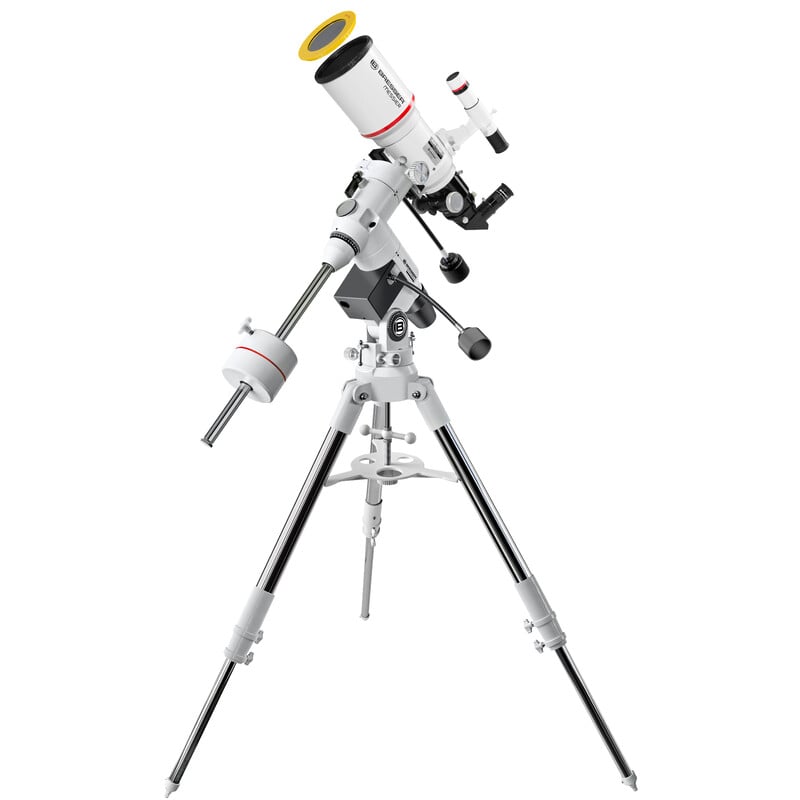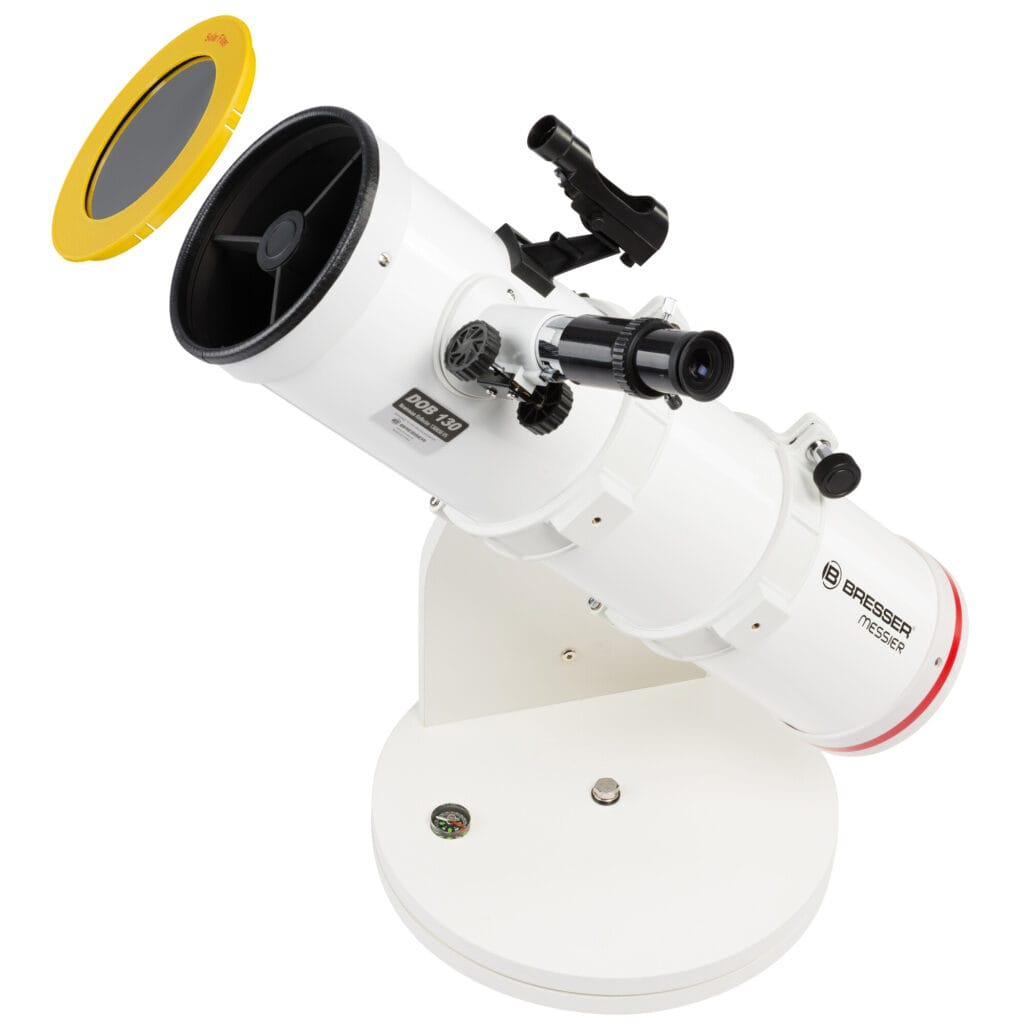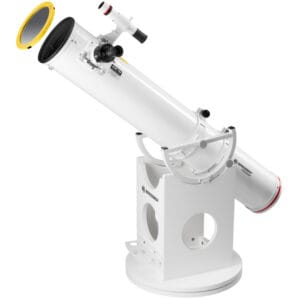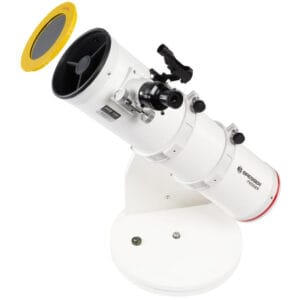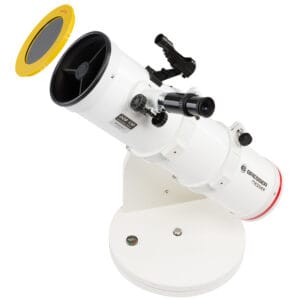A Buy Bresser telescope is the first serious step into the world of stargazing for many beginners. The brand has built a strong reputation in Germany and Europe, with telescopes ranging from simple entry-level models to sturdy, full-size Newtons. But as with any brand, not every model is equally good. Those who delve into the details discover that there are major differences between the cheaper Bresser series and the high-quality Messier-line.
What Bresser really excels at is the balance between price and functionality. For a relatively modest sum, you often get a decent optical system, but only if you choose the right series. Cheap models look attractive, but rarely deliver the image beginners expect.
The reputation of Bresser
Bresser is no newcomer to the market. The brand has been producing optical instruments since the 1950s: from telescopes and microscopes to binoculars and night vision goggles. Their collaboration with the brand Explore Scientific has strengthened the image, but also led to more variety in quality.
Bresser telescopes are intended for a wide audience. For children and beginners, there are lightweight refractors with simple tripods; for advanced observers, Bresser supplies serious Dobsonians with parabolic mirrors and robust mounts. That wide range is both their strength and pitfall. Without knowledge of the differences, it is easy to choose the wrong telescope.
Bresser Messier - the serious line for beginners and experts alike
The Bresser Messier-series is undoubtedly the brand's best line. Where cheaper models often use spherical mirrors, the Messier reflectors are equipped with parabolic mirrors which minimize distortion at the image edges. This produces sharp, high-contrast images, even at higher magnifications.
A popular model within this series is the Bresser Messier 150P Dobson. Multiple users call him “One of the best telescopes in its price range”. The 150 mm mirror captures over 450 times more light than the human eye and shows objects such as the Orion Nebula (M42), the edges of Saturn's rings and even the shadows of Jupiter's moons.
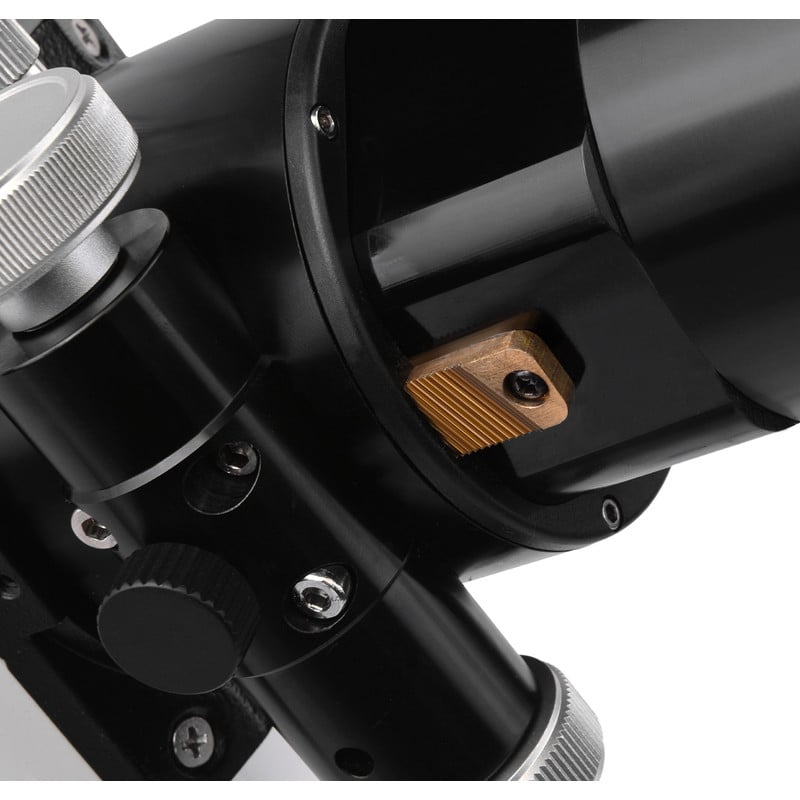
The build quality of the Messier series is also above average. The tube construction feels solid, the focuser is metal and works with a rack-and-pinion system - more precise than the common friction focusers in cheaper models. Users write that “the Messier feels like a telescope that will last for years, not a plastic toy version.”. And we can agree!
In addition, there is praise for the Dobson mount, which moves smoothly and stably even at higher magnifications. This makes the Messier series interesting for both beginners who want comfort and advanced users who value optical performance.
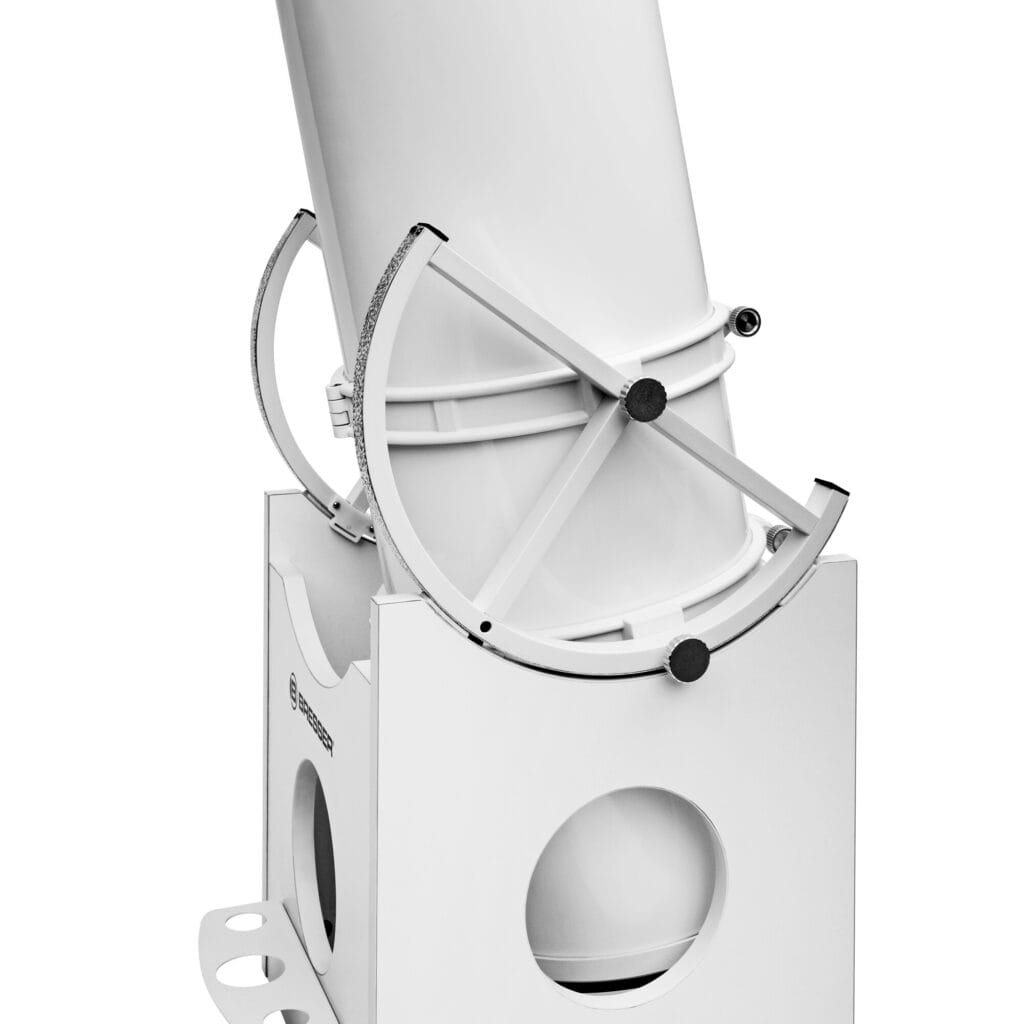
Bresser Nano - the entry-level model with limitations
At the other end of the spectrum is the Bresser Nano–series. This line is aimed at absolute beginners and families who want a first introduction to astronomy. At first glance, the price seems attractive, but here lies the trap: most Nano models, such as the Bresser NT-114/500, are equipped with spherical mirrors.

That sounds technical, so we'll explain. The difference is significant in practice. A spherical mirror causes slight image distortion, especially at higher magnifications. Users complain that at 100x magnification, stars become “spots” instead of points. Our expert Jens described it aptly:
“It's probably better than the real toy telescopes on Amazon or sphere, but still not what you want if you are serious about seeing something in the sky.”
The accessories also leave much to be desired. The included eyepieces are often plastic and the included 3x Barlow lens especially magnifies the errors in the image. The mount is another criticism: a light aluminum tripod that vibrates at the slightest touch. One user wrote:
“The telescope itself is quite okay, but the mount is the weak point. It wobbles constantly, making focusing frustrating.”
In short, in our opinion, the Nano series is suitable as an introduction or fun for children, but not for those who want to do more than look at the moon.
What do our experts say about buying a Bresser telescope?
In general, opinions are divided on Bresser, and the picture is remarkably consistent: the brand is respected, but valued relative to its price.
Basically, we call the Messier-line “robust, standout capable” and “an underrated alternative to Skywatcher”. Some point out that Bresser presumably gets its mirrors from the same factories as competitors in the €400-€700 range. One experienced observer wrote:
“I have a Messier 10” Dobson and it is not inferior to my Sky-Watcher. The optics are bright, the contrast good and the workmanship better than I expected.”
In contrast, there are numerous warnings about the entry-level models. Especially the NT-114/500 and Spica 70/700 are often referred to as “marketing models,” telescopes that look impressive on paper but underperform in practice. You'll also find these kinds of brands a lot from private labels on Bol.com ... we keep repeating it, but don't fall for this!
“They sell them with 675x magnification on the box, but 120x is already the maximum at which the image is still usable,” said one user.
Look, we recommend Bresser absolutely not off as long as you pick the right line. Also, is it a gift for your child/lover who just wants to observe occasionally? Then it's totally fine and it doesn't matter so much what you choose. All in all, a telescope is just a wonderful gift - after all, it opens up a world to you that you didn't know before. So either way you get profit and benefit from it. And suppose you want to upgrade to something more serious, then you can indeed be picky and choose something that is generally consensual: the superior Messier line. That's not to say that everything else is a waste of money. Far from it!
Optical performance in practice
When you buy a Bresser telescope, the optical design determines what you actually see.
- Refractors (Lens Telescopes) within Bresser are user-friendly, but at high magnification often exhibit chromatic aberration: a bluish or purple edge around bright objects.
- Reflectors, especially within the Messier series, offer more aperture per euro. The parabolic mirror provides sharper images without color errors.
With a Messier 150 mm you can see not only planets but also deep-sky objects under dark sky conditions:
- M13 (Hercules Cluster): visible as a sphere of hundreds of stars.
- M57 (Ring Nebula): clearly recognizable as a smoke ring.
- Andromeda Nebula (M31): subtle structure at the core.

The Nano and Spica models do not reach this level. They show the moon in detail, but the weaker optics and shaky mount limit the experience.
Accessories and expansion options
A strength of Bresser is compatibility. Almost all telescopes use standard 1.25” eyepieces, making it easy to upgrade to better lenses. An investment in a Plössl eyepiece set or a FMC coating filter delivers visibly better contrast immediately.
The eyepieces supplied by Bresser are functional, but not spectacular. For sharpness and comfort, eyepieces of Omegon, Baader or Celestron a sensible step up. For those considering astrophotography, the Messier models can take advantage of the T2 connection for camera adapters - something mostly missing from the Nano series.
Who is Bresser suitable for?
The Bresser telescope focuses mainly on beginners who want an affordable but serious start.
- The Nano Series is suitable for families with young children or occasional users.
- The Messier Series is for those who really want to learn to observe and value optical quality.
Advanced users will see the Messier line as a solid stepping stone to heavier models from brands such as Sky-Watcher or Omegon, without paying the top price.
What we recommend
A Buy Bresser telescope is certainly not a wrong choice, provided you know which line suits you. The Messier Models are excellent instruments for beginners and advanced players who want quality without switching to more expensive brands. They offer solid optics, good mechanics and a reliable price-performance ratio.
However, avoid the entry-level sets with lots of accessories on the box: there your money goes mainly to external appearance, not optical performance.
If you really want to enjoy sharp images of the moon, Jupiter or the Orion Nebula, opt for a Messier Dobson. Add a good eyepiece and color filter later, and you have a scope that will give you years of pleasure.

